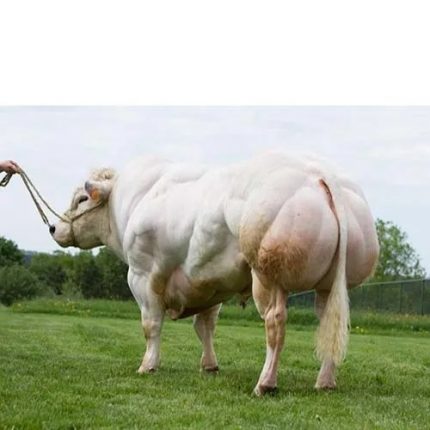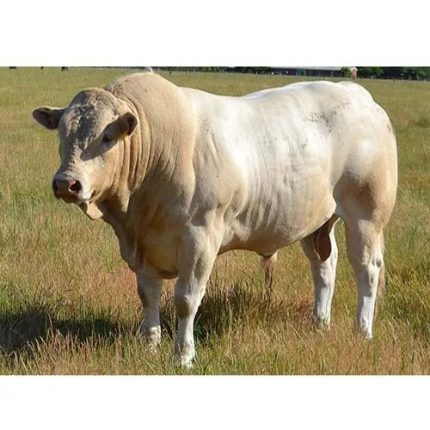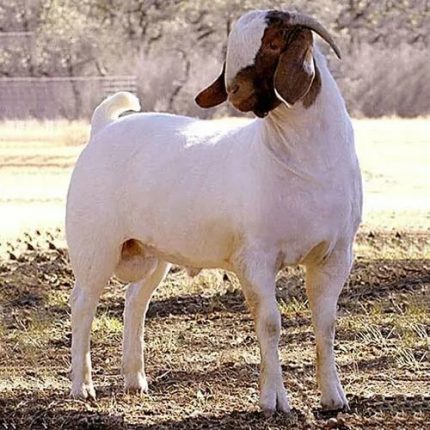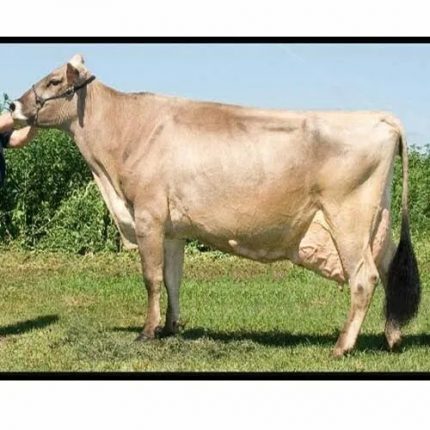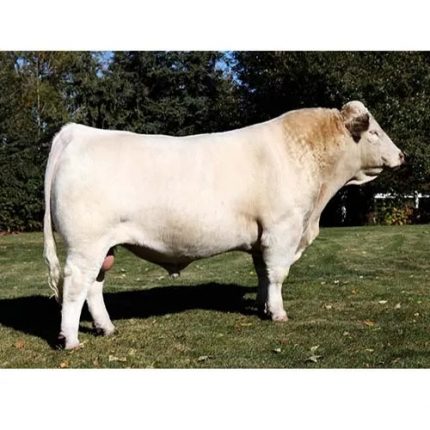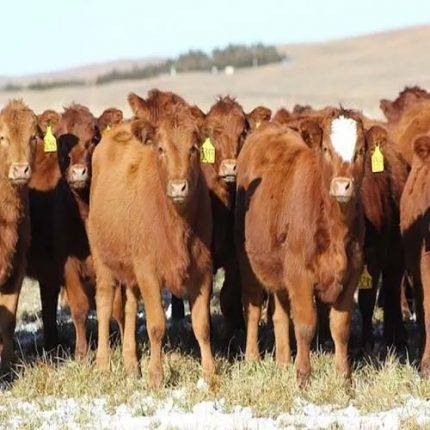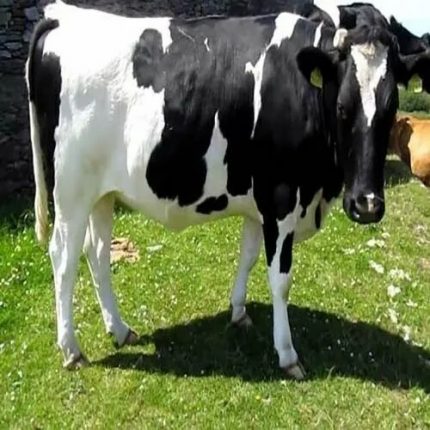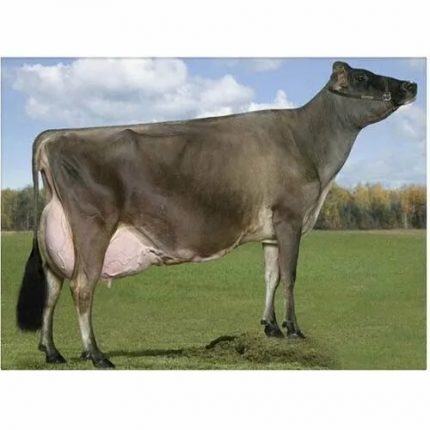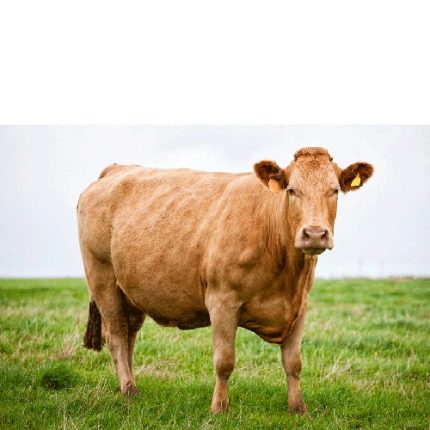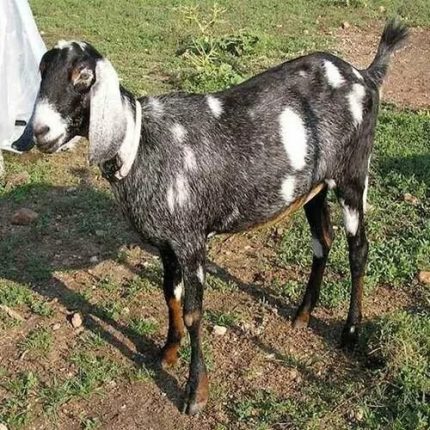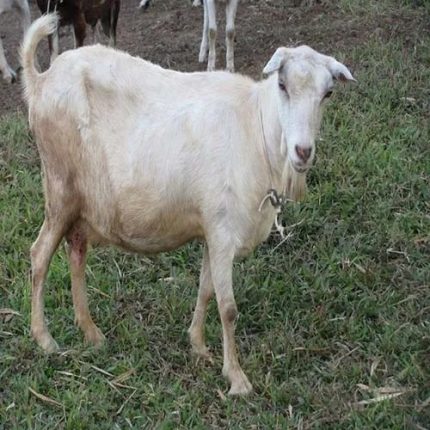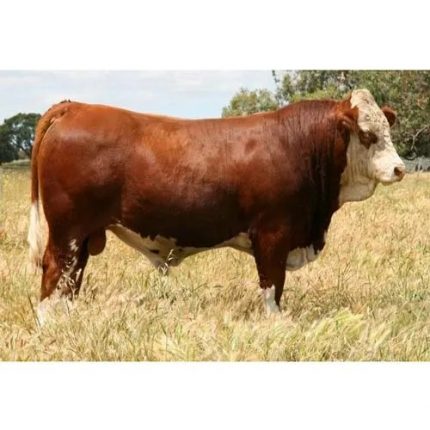Belgische Witblauwe
The Belgian Blue breed is unique due to its extreme muscling. A high meat percentage as well as their high-priced meat provide the Blue & Whites with a high market value. The animals have a very quiet temperament, reach high growth figures, and the sucklers – often giving birth by means of a cesarean – have good mothering qualities. Belgian Blues not only show a blue hair colour, but can also be recognized by their white & black coat.
Blonde d’Aquitaine
The size, length and elegance of the Blonde d’Aquitaine do appeal to many a beef cattle lover. They have a quiet temperament, good fertility and can reach a high age. With their enormous bodies (suckler dams can weigh up to 1000 kg) they also supply many kilos of high quality meat. The Blonde is still quite a young breed that is gaining popularity all over the world.
Boer Goats
Boer goats commonly have white bodies and distinctive brown heads. Some Boer goats can be completely brown or white or paint, which means large spots of a different color are on their bodies.
Like the Nubian goat, they possess long, pendulous ears. They are noted for being docile, fast-growing, and having high fertility rates.
The primary market for slaughter goats is a 22–36 kg (49–79 lb) kid; kids should reach marketable size at weaning age. The kid of a proven fast-growing sire might weigh 36 kg (79 lb) at 90 days, while the kid of a poor-quality sire might weigh only 15 kg (33 lb) at 90 days.
An average-quality buck will initially be less expensive to purchase, but it can significantly undermine an operation’s long-term profitability.
Brown Swiss
The Brown Swiss is, after the HF, the most productive dairy breed in the world. With an average of 9,000 kg of milk, 4% fat and 3.5% protein, the milk of this breed is pre-eminently suited for the production of cheese. In addition, the Brown Swiss is known for its robust size, big hairy ears, friendly disposition, extremely strong legs and a longer gestation period. It is by far the best breed to keep in sober conditions, for example when feed quality is low.
Charolais
Its enormous growth ability is the trademark of the Charolais. The weight that can be obtained by the cows and bulls truly fires one’s imagination. The creamy-white animals with their curly hair don’t require much attention and with their quiet temperament are easy to keep. The meat of the Charolais is – just like their structure – a touch coarse, but contains hardly any fat.
Hereford Cattle
With their red bodies and white heads, the Herefords are easily recognizable. It is one of the world’s most widely dispersed breeds, also thanks to the fact that they can stay outside year round. And of course thanks to their marbled meat, quiet temperament, strong grazing properties, and the fact that they are easy to keep, while the beautiful Herefords can also be found in polled versions
Holstein Friesian Cattle
The first official breeding cooperative was established in Fischbek near Altmark in 1876. The objective was to use pure-bred sires of the black-and-white Lowland Breed to develop this breed in pure-breeding.
From then on, the number of regional breeding associations and breeding cooperatives increasingly grew to merge into bigger organizations in the years to come.
To this day, Germany has numerous powerful cow families whose foundation cows can be traced back to the very first registrations in the herdbooks of North German breeding area
Jersey
The Jersey is small sized, weighs about 360 to 540 kg, however, the breed is big economy-wise. Thanks to their light structure, they need less maintenance feed and are strong grazers. In addition they are very prolific and calve out extremely easily, which makes them very suitable for cross-breeding. But more than anything the Jersey is a superb fat producer. Contents of 6% fat and 4% protein are the rule rather than the exception. They supply the unique kind of milk that is being used in many a local produce.
Limousin
Among the beef breeds the Limousin is a pure suckler. Fertility and easy calving are good mothering properties which they combine with good food conversion. Popular as grazers in nature reserves, the spirited reddish-brown Limousins also supply a wonderful, lean piece of high-quality meat with hardly any fat
Nubian Goat
The Nubian’s size makes it a very useful dual purpose animal. The Nubian breed leads the way for the dairy breeds in butterfat production: it produces on average, 4.6% or more butterfat content. This is surpassed only by the Nigerian Dwarf, Pygmy goat and Boer goat breeds, which are less likely to be used for large scale milk production, as for a dairy or cheese goat.
Saanen Goats
The Saanen originates in the historic region of the Saanenland and in the neighboring Simmental, both in the Bernese Oberland, in the southern part of the Canton of Bern, in western Switzerland. Because of its high productivity, the Saanen has since the nineteenth century been exported to many countries of the world.
Simmental Cattle
Among the older and most widely distributed of all breeds of cattle in the world, and recorded since the Middle Ages, the Simmental breed has contributed to the creation of several other famous European breeds, including the Montbeliarde (France), the Pezzata Rossa d’Oropa (Italy), and the Fleckvieh (Germany and Austria). We have have the pregnant cattle in stock.


